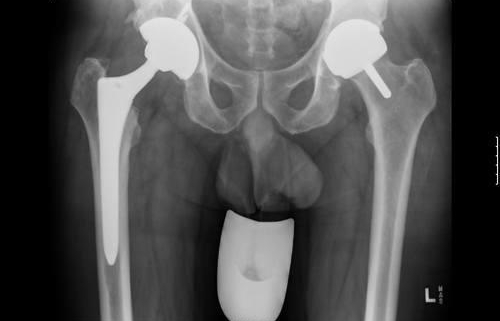
Hip Resurfacing Arthroplasty
Overview
Hip resurfacing arthroplasty is a type of surgical procedure carried out to replace damaged surface of the hip joint, often used as an alternative to total hip replacement. It provides a solution for individuals suffering from severe hip pain and discomfort due to conditions such as arthritis.
Types
Hip resurfacing arthroplasty isn’t categorized into varied types. However, the procedure can be differentiated based on the implant materials used like metal-on-metal or ceramic-on-ceramic. The choice of implant for hip resurfacing usually depends upon the patient’s unique situation and the surgeon’s expertise.
Causes
The most common cause necessitating hip resurfacing arthroplasty is osteoarthritis. This condition involves wear-and-tear of the hip resulting in painful inflammation and stiffness. Other causes may include:
-
- Rheumatoid arthritis
-
- Previous injuries or fractures to the hip
-
- Hip dysplasia
Symptoms
People requiring hip resurfacing arthroplasty may experience such symptoms as:
-
- Constant or recurring pain in the hip
-
- Stiffness or decreased mobility
-
- Difficulty walking or associated limping
-
- Rest related pain, particularly at night
Diagnosis
Hip resurfacing arthroplasty is considered following a cohesive diagnosis process. Initially, a physical examination is conducted to assess hip mobility and pain. This is usually followed by imaging tests such as X-rays or MRIs to evaluate the level of damage to the hip joint.
Treatment Options
Depending upon the degree of hip damage and patient’s overall health, varied treatment options could be considered before opting for surgery. These include:
-
-
- Physical therapy
-
-
-
- Pain management through medications
-
-
-
- Use of assistive devices like canes or walkers
-
When these interventions don’t provide relief, hip resurfacing arthroplasty can be an effective surgical solution.
Living With Hip Resurfacing Arthroplasty
Life after hip resurfacing arthroplasty usually requires a period of rehabilitation including physical therapy to regain strength and mobility. Here are some practical tips:
-
-
- Adhere to the recovery plan prescribed by your healthcare team
-
-
-
- Engage in low-impact physical activities like swimming or cycling
-
-
-
- Take prescribed medications on time to manage pain and prevent complications
-
-
-
- Adopt a balanced diet to aid your body’s healing process
-
When to Seek Help
Post-surgery, immediate medical attention should be sought if you experience:
-
-
- New or worsening hip pain
-
-
-
- Redness, swelling, or warmth around the surgery site
-
-
-
- Signs of infection like fever, chills or unexplained fatigue
-
-
-
- Chest pain or breathing difficulties – these could indicate a serious condition like a blood clot
-
Remember, hip resurfacing arthroplasty is a significant surgical procedure that requires a committed recovery plan. Stay in regular communication with your healthcare team, ask questions, and express any concerns you have about your progress.
